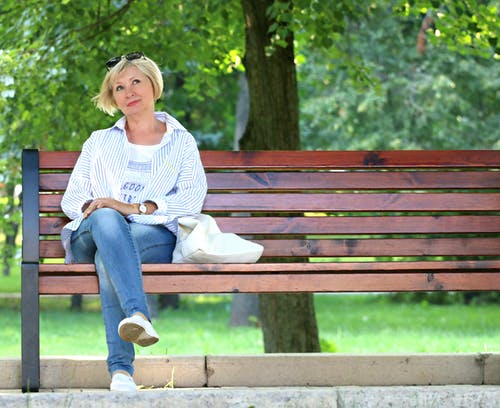Women’s Health Part 2 – How to manage the menopause
Many clients tell us about their experiences during the menopause and so in this instalment of our women’s health series, we take a closer look into the symptoms and what we can do to overcome them.
So what is the menopause, anyway?
From the Greek word menos (month) and pausis (cease) – and informally known as “the change” – the menopause is a natural process that each and every woman goes through between their late forties and early fifties. Apart from the physiological changes (for example, changes to the normal pattern of the menstrual cycle, hot flushes, night sweats, joint and muscle pain, weight gain), women may also experience psychological symptoms such as mood swings, lapses in concentration (or ‘brain fog’), irritability, or low self-confidence. Symptoms of the “change” can last from a couple of months to several years and this period of time is generally known as perimenopause.
How can women manage symptoms of the change?
One of the striking things I’ve found over the years, as clients have opened up about their experiences, is that for many, the menopause is considered to be a “nuisance”; something that has an adverse impact of their overall quality of life, and something which needs to be “treated”, for example with hormone therapy. But what if there were other alternatives we could try before considering medical intervention?
The first step in the process is changing our perspective towards the menopause. By accepting it’s a natural part of the ageing process and not a disease or a condition, we can begin to focus on how to manage any symptoms that might be causing concern. Even ‘getting old’ is seen by many in our society as a negative attribute, although my personal feeling is that if you’re in your fifties, do you really want to look like a 20-year-old? So, if we can accept the ageing process, and begin to respect ourselves for what we are, then that’s half the battle. Once we have built up our self-esteem (a lack of which can be common during the menopause) and feel better about ourselves generally, then we can start to take positive action to manage some of the other symptoms.
Pilates as part of a healthy lifestyle
Another striking thing I have noticed while teaching Pilates is that the more exercise my clients undertake – i.e. combining two to three weekly Pilates sessions with walking and/or yoga – the better they feel overall, and the less prone they are to the symptoms mentioned above. Pilates is a particularly good exercise for improving attention span, easing sore joints and muscles, and alleviating stress.
In addition, making small changes to our lifestyle can help us manage the changes that occur in our bodies. For example, focusing on balanced nutrition, drinking in moderation, and preventing stressful situations can all result in a better quality of life – at any time in our life.
I haven’t personally reached the menopause, although when I was entering my forties, my body was telling me that I was exhausted and permanently stressed. I have listened to my body by taking more time out for myself, drinking less coffee and substituting some of my competitive running (which produces high levels of the stress hormone, cortisol) with additional Pilates sessions. By eliminating the things that seemed to cause the bad feelings, I immediately felt better overall.
Therefore, being aware of what goes on in our body is a great start. So many of us have a low body awareness – we simply don’t see the signals our body is giving us, and we aren’t aware of the things that can help our body.
For some women, hormone therapy is certainly an option, but trying different sports, such as Pilates and/or yoga, going for walks in the fresh air, and re-evaluating your diet, is definitely worth a go in the first instance. So if you’re wondering how to ‘manage’ rather than ‘treat’ symptoms of the menopause, do pop by and have a chat, or even give one of our sessions a go, before considering other types of therapy.
